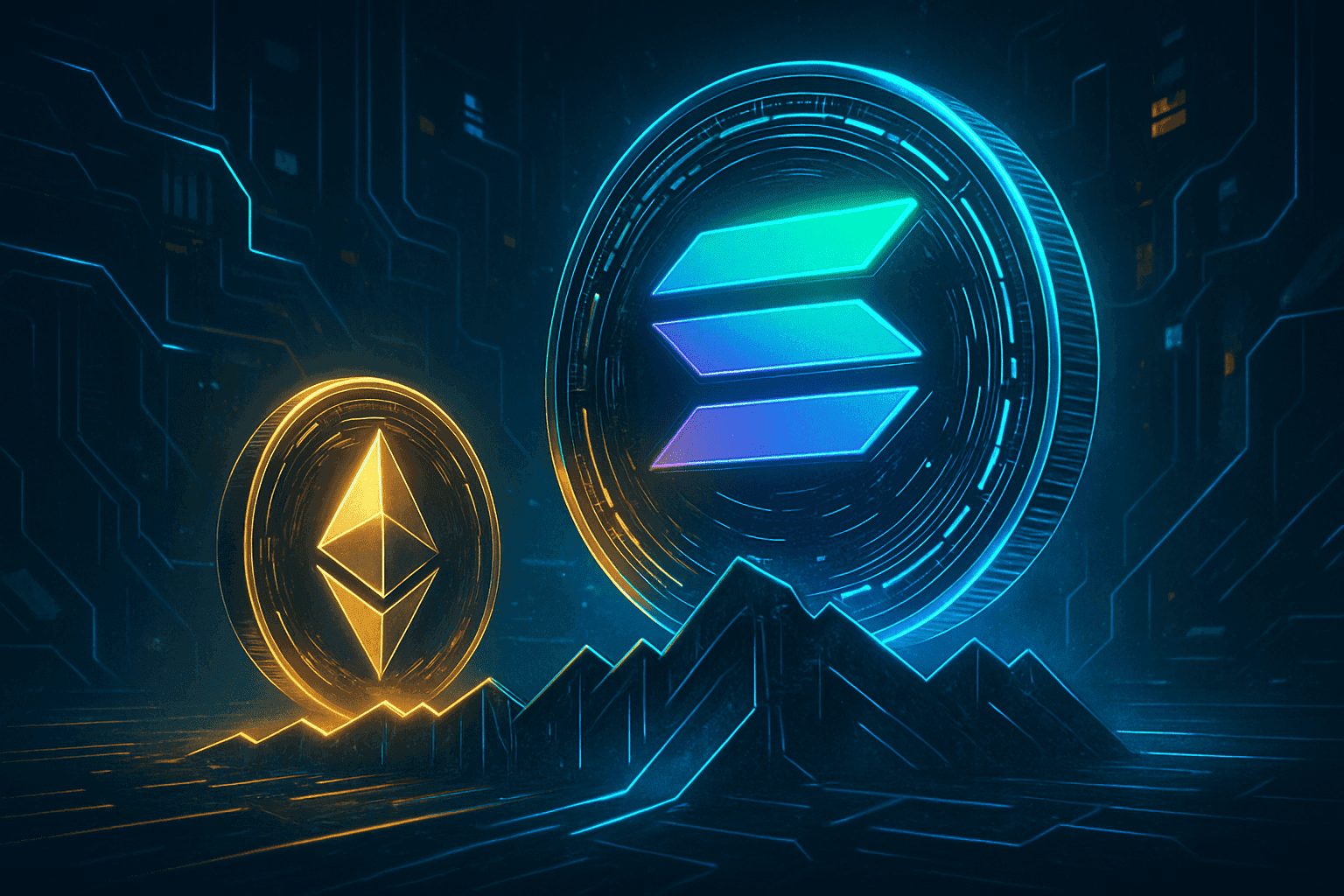Solana's meteoric rise in the crypto ecosystem has generated an intense debate: could this high-performance blockchain seriously challenge Ethereum's position as the second most important cryptocurrency? With a market capitalization that recently exceeded $100 billion, Solana is reducing the gap with its main competitor. Let's analyze in depth this exciting technological duel and its implications for the future of cryptocurrencies.
The Race for Second Place: What Makes Solana Special?
Since its debut in March 2020, Solana has shown growth that few could anticipate. Its first major explosion occurred in November 2021, when it reached a valuation of $72.4 billion. However, what has really surprised the market is its recent milestone of surpassing $100 billion, establishing a new all-time high.
Solana's appeal primarily lies in its revolutionary technology. Unlike other blockchains, Solana implements a unique combination of consensus mechanisms: Proof-of-History (PoH) and Proof-of-Stake (PoS). This architecture allows something extraordinary: nodes can validate the entire blockchain using only fragments of information, thanks to PoH creating a verifiable history of transactions.
Speed vs. Trust: The Winning Cards of Each Blockchain
Transaction speed represents Solana's most obvious advantage. While Ethereum processes approximately 15 transactions per second, Solana reaches more than 2,600. This vast difference is not just a technical number, but directly translates into remarkably better user experiences, especially for applications requiring high frequency operations.
As Juan Pellicer, Senior Research Analyst at IntoTheBlock, points out: "This results in a smoother user experience, particularly for high-frequency applications and retail users. This technological differentiation has driven Solana's rapid growth."
However, Ethereum has an ace up its sleeve: its unwavering security and reliability.
The DeFi Ecosystem: Ethereum's Impregnable Fortress
Ethereum doesn't maintain its dominant position by chance. Since 2015, this blockchain has built the most robust ecosystem for decentralized finance (DeFi), with a Total Value Locked (TVL) close to $124 billion.
This advantage goes beyond numbers. As a pioneer in smart contracts, Ethereum has developed an infrastructure that inspires confidence in both developers and institutional investors. Its uninterrupted uptime record since its launch gives it credibility that's difficult to match.
"Ethereum's infrastructure is unmatched in economic security, maintaining an impeccable uptime record since its inception, fostering unparalleled trust for institutional and high-value applications," explains Pellicer.
The Obstacles Solana Must Overcome Before Dethroning Ethereum
Despite Solana's impressive performance, the network still faces significant challenges before it can displace Ethereum:
- Established network effect: Ethereum has thousands of developers and projects built on its blockchain, creating a powerful network effect that's difficult to replicate.
- Ecosystem maturity: DeFi protocols on Ethereum are more tested and established, having withstood numerous market tests and attacks.
- Institutional adoption: Large companies and financial institutions have shown preference for Ethereum when exploring blockchain solutions.
"Although Solana can continue to grow and potentially challenge Ethereum in specific niches, surpassing Ethereum's entrenched position as the dominant platform in the immediate future remains unlikely, though the competitive landscape is dynamic and evolving," states Pellicer.
The Impact of Technical Updates: Who Evolves Faster?
Ethereum's transition from Proof-of-Work (PoW) to Proof-of-Stake (PoS) in September 2022 marked a turning point in its development. This update, known as "The Merge," significantly reduced the network's energy consumption and laid the groundwork for future scalability improvements.
However, Solana's ability to implement technical improvements quickly, without the complexity of a community as diverse as Ethereum's, could give it advantages in the innovation race. Its architecture was designed from scratch to solve the scalability problems that Ethereum is trying to address through updates.
Complementary Rather Than Competitors: A Multi-Blockchain Future?
Perhaps the question about which blockchain will "win" is incorrect. The crypto ecosystem seems to be evolving toward a multi-chain environment where different blockchains serve different purposes.
Ethereum, with its proven security and robustness, could remain the preferred option for high-value DeFi applications and complex contracts. Meanwhile, Solana could dominate in niches where speed and low costs are priorities, such as payments, blockchain gaming, or applications with high transaction frequency.
Interoperability between blockchains, allowing users and developers to leverage the advantages of each, could be the true future of the crypto space.
Conclusion: 2025, The Decisive Year?
While some analysts point to 2025 as the year when Solana could surpass Ethereum in market capitalization, the reality is that both blockchains have distinctive strengths that attract different types of users and use cases.
Solana's rapid growth demonstrates the value that the market places on transactional efficiency and speed. However, Ethereum's trust, security, and mature ecosystem represent competitive advantages that are difficult to overcome in the short term.
What does seem clear is that the competition between these two blockchains drives innovation throughout the crypto ecosystem, ultimately benefiting users with better technologies, lower costs, and greater adoption.

